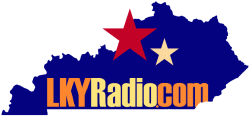
Page updated March 20, 2025
Home Page | Louisville Radio | Lexington Radio | Message Board | Contact Us
| 970 WAVE/WAVG | |
|
WAVE Photos |
WAVE Newsletters
| WAVE Ink |
WAVE Airchecks |
WAVE Jingles
WAVE Trivia: The station dedicated its new facilities with a coast-to-coast program through the NBC Red network. The program originated from Louisville's Brown Hotel (where the station had its offices, studios and control rooms on the 15th floor) on December 30, 1933. It initially went on the air with a power of 1000 watts on a frequency of 940 kilocycles. (Seven years later, power was increased to 5000 watts and the year after that the frequency was changed to 970.) The first vice-president and general manager was Nathan Lord. Signing the station on the air for its inaugural broadcast, announcer Burt Blackwell said: "Louisville, gateway to the South, is on the air over the National Broadcasting Company. Station WAVE is presenting its first program. WAVE, a new station dedicating itself to the service of radio listeners, to the betterment and enjoyment of the people it serves. Programs of national importance, programs of local interest, music and sports information -- and all the arts which are vocal -- will be yours at the twist of a dial on this wave length granted by the Federal Communications Commission to the associated station of the National Broadcasting Company in Louisville...station WAVE."
Know anything more about this station? Have
any WAVE airchecks, photos or promotional material? |
|
|
Know
anything more about this station? Have any WAVE/WAVG airchecks, photos or
promotional material? Drop us a line. |
|
| WAVE Newsletters | |
| November 1976 Newsletter Page 1 | November 1976 Newsletter Page 2 |
| November 1976 Newsletter Page 3 | November 1976 Newsletter Page 4 |
| October 14, 1976 Announcers Schedule | |
|
|
|
| WAVE Ink | |
|
WAV(E)ing Farewell The Courier-Journal, Thursday, July 29, 1989 Switch to satellite service marks end of station as a local radio power By David Inman Staff Writer
Among those soon to leave WAVG are Lou Harpenau, left, Danny King, Charles Gazaway, production manager Don Pay, John Asher, Chuck Casteel and Allen Brown
Danny King remembers back in the 1970s when
the Federal Communications Commission allowed 18 minutes of commercials
per hour on a radio show. |
|
|
WAVG's Aging Oldies By Tom Dorsey - The Courier-Journal - September 17, 1990 In the ever-changing world of radio-music formats, WAVG (970-AM) has dropped back to what sounds like the 1940s and '50s to some listeners. Program director Mark Stahr says the station is playing a music package that spans a period from post-World War II into the 1980s, with an emphasis on the 1950-65 period. Stahr says the switch puts WAVG somewhere between WXVW's big-band sound and WVEZ's light-and-easy formula. With all the combinations and crossovers, most stations, except classical, jazz and gospel, seem to fall into a few broad categories. It's getting harder and harder to tell which station you're tuned into without checking the dial. |
|
|
WAVG
970 AM Marks 60 Years of Broadcast History From a Special WAVG Newspaper Insert - 1993 December 30, 1993 will mark the 60th Anniversary of a radio advertising business that has sent a lot of electricity out from the WAVE antenna for over a half-century. Early Days The station can trace its origins to 1915, when W.V. Jordan began operating a wireless transmitting station (amateur call letters 9-L-K) with government license to be used for the communicating of Morse code between individuals. After Jordan's return from World War I, he resumed his radio operations "radiocast of phonograph records" even though the government said the wireless transmission was not for public use. The problem was, there wasn't a public to hear them, so they rigged up a receiver to a local hospital and provided patients with earphones so they could listen to his station. In 1922, Jordan was granted a license for the call letters WLAP (We Love All People). The station went on the air after Jordan finished his workday, "at his leisure". In 1926, Jordan sold the license to Virginia Avenue Baptist Church. Two years later it was resold to Dinwiddie Lampton, and thus began the modern era of Louisville-area broadcasting. 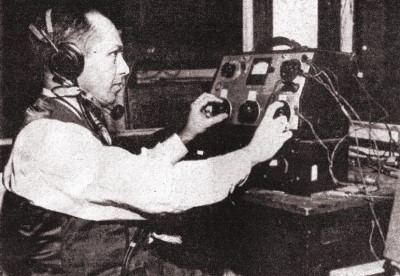
The early days of broadcasting were very busy with music, "news flashes" from the Louisville Herald-Post newspaper, and remote broadcasts from the steamboat America. WLAP became involved in a legal fight with a station in Hopkinsville, Kentucky, and George Norton eventually purchased that station, WFIW, moved it to Louisville and changed the call letters to WAVE in 1933. Signing the station on the air, announcer
Burt Blackwell issued the summary of the aims of "Louisville, gateway to the South, is on
the air over the National Broadcasting Company. Station WAVE is presenting
its first program. WAVE, a new station dedicating itself to the service of
radio listeners, to the betterment and enjoyment of the people it serves.
Programs of national importance, programs of local interest, music, sports
information...and all the arts which are vocal…will be yours at the twist
of a dial on this wavelength granted by the Federal Communications
Commission to the associated station of the National Broadcasting Company
in Louisville, Station WAVE." 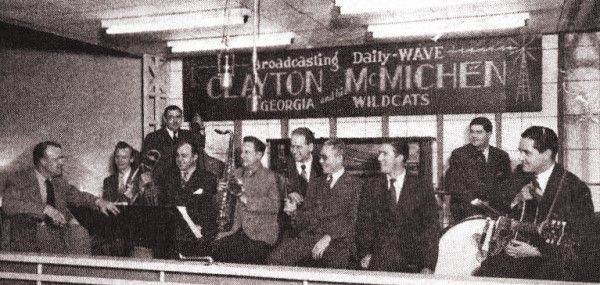
Although WAVE was broadcasting all the
big news of the thirties, most Louisvillians of middle years and beyond
base their affection for WAVE on their coverage of the 1937 flood. Relays of WAVE announcers and engineers broadcast 24 hours a day during the 10-day emergency, repeating over and over the phrase, "Send a Boat." A volunteer intercity network for flood relief in the Ohio Valley was set up. It included stations in Nashville, Indianapolis, Lexington and Covington, and all sacrificed commercial programs in the interest of public welfare. Later, NBC and the British Broadcasting Corporation tied together about 5,000 stations and gave the flood the largest coverage in the history of radio. Incidentally, a fish was caught in the lobby of the Brown, and at the hotel's site -- 4th & Broadway -- the water was so deep and swift that only the most powerful motorboats could be used. The flood was radio's opportunity, and the results were radio's triumph. Said Broadcasting Magazine, "Thank God for Radio." 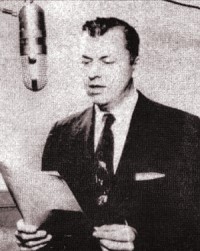 More Power On November 3, 1940, WAVE increased its power from 1,000 watts to 5,000 watts, and on March 29, 1941, it changed its frequency from 940 to 970 kilocycles and began transmitter operation from its new transmitter building on Hamburg Pike north of Jeffersonville, Indiana. This increase meant power would be provided to middle Kentucky and Southern Indiana with greater coverage and service. WAVE and WWII During World War II, WAVE and NBC carried on-the-spot reports of the fighting...Pearl Harbor; the Pacific War, the European War, the atomic bomb, the surrender of the Axis. Local programming, too, reflected the tempo of those war years: "Man On The Street" moved into the studio for security masons, and listeners phoned in questions for the Patterson-Blackwell team to answer. WAVE broadcast the awarding of the Navy "E" to Tube Turns, the Jeffersonville Boat Works, and other plants. The departure of the 138th Field Artillery, Louisville's own, for Camp Shelby was aired, as were regular Air Corps recruiting programs and programs by Bowman Field's glider-training airmen. WAVE recorded the words of the wife of the recipient of Eddie Cantor's "Typical GI Joe" award, and originated programs about the War Housing Center. Even the station's unique "Cruising ln Traffic" program, in which police in WAVE's mobile unit gave out on-the-spot traffic advice, took on a wartime aspect. 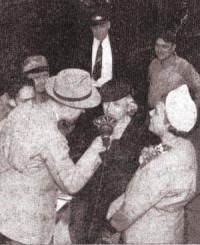 Youth Audience Addressed In 1946, WAVE concentrated on the younger generation, with "Making Music" in cooperation with the Louisville Orchestra, a Junior Roundtable on public affairs, and a juvenile quiz show called "Healthy, Wealthy and Wise", which had a ten-year run on WAVE. And with the Division of Recreation, Department of Public Parks initiated a program called "The Magic Carpet", which featured Nancy Owen of Anchorage as the Story-Telling Lady. This program was to remain on the air as long as children under 14 were barred from the area playgrounds because of the polio epidemic. WAVE won Variety's 1947 Showmanagement Award for responsibility to the community, being cited for a UN art exhibit, and for its "broadened viewpoint and local enlightenment" in connection with airing both sides of some issues together for broadcast discussion. In 1942, WAVE again won a Variety award for "The American Story", a documentary series on the American Way. Also in 1947, WAVE inaugurated a series of "Reports From Congress". And in 1946 and 1947, WAVE aired regular Louisville Orchestra Concerts. Good Deeds The Dawn of a New Era First and Foremost In 1969, the company's corporate name became Orion Broadcasting, Incorporated. The early 1980s found the Norton family selling WAVE radio and television. Then in 1988, the Henson family of Louisville agreed to sell the radio station, WAVG-AM 970, to Radio One of Louisville, Incorporated. By May 1991, WAVG-AM was again for sale
and was purchased by Sunnyside Communications Incorporated, which owns
WXVW-AM 1450. Charlie Jenkins, Sunnyside President, made changes in WAVG's
format to "Stardust". He says the new WAVG is "brighter" and more
"up-tempo" with "stronger air personalities." Stay tuned. |
|
|
|
|
| WAVE Airchecks | |
|
WAVE
Morning News
(January 1971) 10:55 - 3841 KB |
|
|
WAVE Pat Murphy '70s
Aircheck
(Exact Date Unknown) 20:16 - 7127 KB |
|
|
WAVE Jim Lucas
(1973) 61:26 - 21,579 KB Note: There's occassional squeal due to dried out lubricant on the original tape, but otherwise this aircheck is "right-off-the-board" quality, complete with unedited commercials and newscasts. |
|
|
WAVE Dick
Marendt
(1973) 49:04 - 17,255 KB This aircheck is "right-off-the-board" quality. Only the songs are scoped; spots and newscasts are intact. |
|
|
WAVE 1975 Desegregation News Coverage Retrospective 28:30 - 13,360 KB This
special, narrated by Allen Brown, spotlights WAVE Radio's coverage of |
|
|
WAVE 1976 Jefferson County Teachers Strike Coverage Special 12:59 - 6087 KB This Allen
Brown-narrated retrospective features highlights of |
|
|
Tyler
Cox WAVE Newscast Montage #1 54:53 - 25,728 KB Here are several back-to-back Tyler Cox WAVE Radio news airchecks from the mid 1970s. |
|
|
Tyler Cox WAVE
Newscast Montage #2 17:09 - 8040 KB Listen to more Tyler Cox WAVE radio newscasts from 1976 to 1979. |
|
|
WAVE Composite
(March 25, 1976) 9:05 - 3193 KB This aircheck composite features Danny King, Joe Fletcher, Chuck Casteel, Pat Murphy, and Jack Gallo. |
|
|
WAVE Composite
(July 16, 1976) 15:59 - 5619 KB You'll hear Danny King, Joe Fletcher, Chuck Casteel, John Scott Morgan, and Jack Gallo in this aircheck composite. |
|
|
WAVE Jack
Gallo (August 17, 1976) 17:57 - 6325 KB |
|
|
WAVE Rip
Rinehart (May 16, 1977) 6:59 - 2457 KB |
WAVE Rip
Rinehart (August 12, 1977) 11:41 - 4110 KB |
|
WAVE Jim
Jeffrey (December 21, 1977) 8:30 - 3984 KB |
WAVE Rip
Rinehart (December 21, 1977) 7:36 - 3564 KB |
|
WAVG Karl
Shannon (1985) :43 - 340 KB |
|
|
WAVG Jeff
Kibbey (Summer 1985) 20:53 - 9793 KB |
WAVG Bob
Riggle (September 29, 1985) 11:04 - 5194 KB |
|
WAVG Jeff
Kibbey (Fall 1985) 23:57 - 11,229 KB |
WAVG Jeff
Kibbey (November 24, 1985) 17:17 - 8108 KB |
|
WAVG Joe
Fletcher (June 1987) 11:52 - 4181 KB |
WAVG Joe
Fletcher (July 1987) 3:05 - 1089 KB |
|
WAVG Danny
King (July 31, 1989) 4:52 - 1715 KB |
WAVG
Chuck Casteel (July 31, 1989) 12:50 - 4517 KB |
|
WAVG Allen
Brown (July 31, 1989) 1:49 - 640 KB |
WAVG Jim
Vaughn (July 31, 1989) 6:36 - 2324 KB |
|
WAVG Composite (August
15, 1989) 20:36 - 7246 KB
You'll hear the last breaks from long-time
WAVE/WAVG on-air staffers Danny King, |
|
|
WAVG Composite (August
16, 1989) 10:09 - 3571 KB This composite includes breaks from Mark Stahr and Ed Phillips. |
|
|
Local Programming (1989)
4:14 - 1988 KB |
Satellite
Oldies Programming (1990) 1:10 - 550 KB |
|
Last Day
Oldies Format (September 3, 1990) 5:35 - 1988 KB |
First Day Original Hits (September 4, 1990) 4:11 - 1471 KB |
|
WAVG - Your Question
Please (1991) 53:49 - 18,920 KB In this 1991 talk show, Ed Phillips interviews some of the WAVE radio personalities of the past, including Jim Caldwell, Joe Fletcher, Andy Chapell and Jerry Tucker. Despite some microphone problems, it should be an informative and enjoyable listen for anyone with an interest in Louisville radio history. |
|
|
History
of WAVE - Part 1 (1991) 53:44 - 18,892 KB |
History
of WAVE - Part 2 (1991) 60:23 - 21,229 KB |
|
History
of WAVE - Part 3 (1991) 72:53 - 25,628 KB |
History
of WAVE - Part 4 (1991) 41:29 - 14,643 KB |
| In the Summer of 1991, WAVG's Mark Owen produced a multi-hour special on the History of WAVE radio, which aired over two weekends. A scoped version of the first parts of the special is presented here. | |
|
WAVG - 1991-1996 Montage 27:45 - 9757 KB (You can hear a few clips from WXVW in this montage as well.) |
|
|
Joe Fletcher, Stardust (June
15, 1997) 3:11 - 1120 KB |
News 970 WLKY Transition (June
16, 1997) 2:03 - 721 KB |
|
WAVE 1450 - Stardust Format (June
1997) 6:49 - 2401 KB |
|
| WAVE Jingles | |
|
WAVE JAM
Jingles (1976) :45 - 358 KB For more information on JAM jingles, go to the JAM Website. |
|
| All audio is in downloadable MP3 format. | |
Home Page | Louisville Radio | Lexington Radio | Message Board | Contact Us